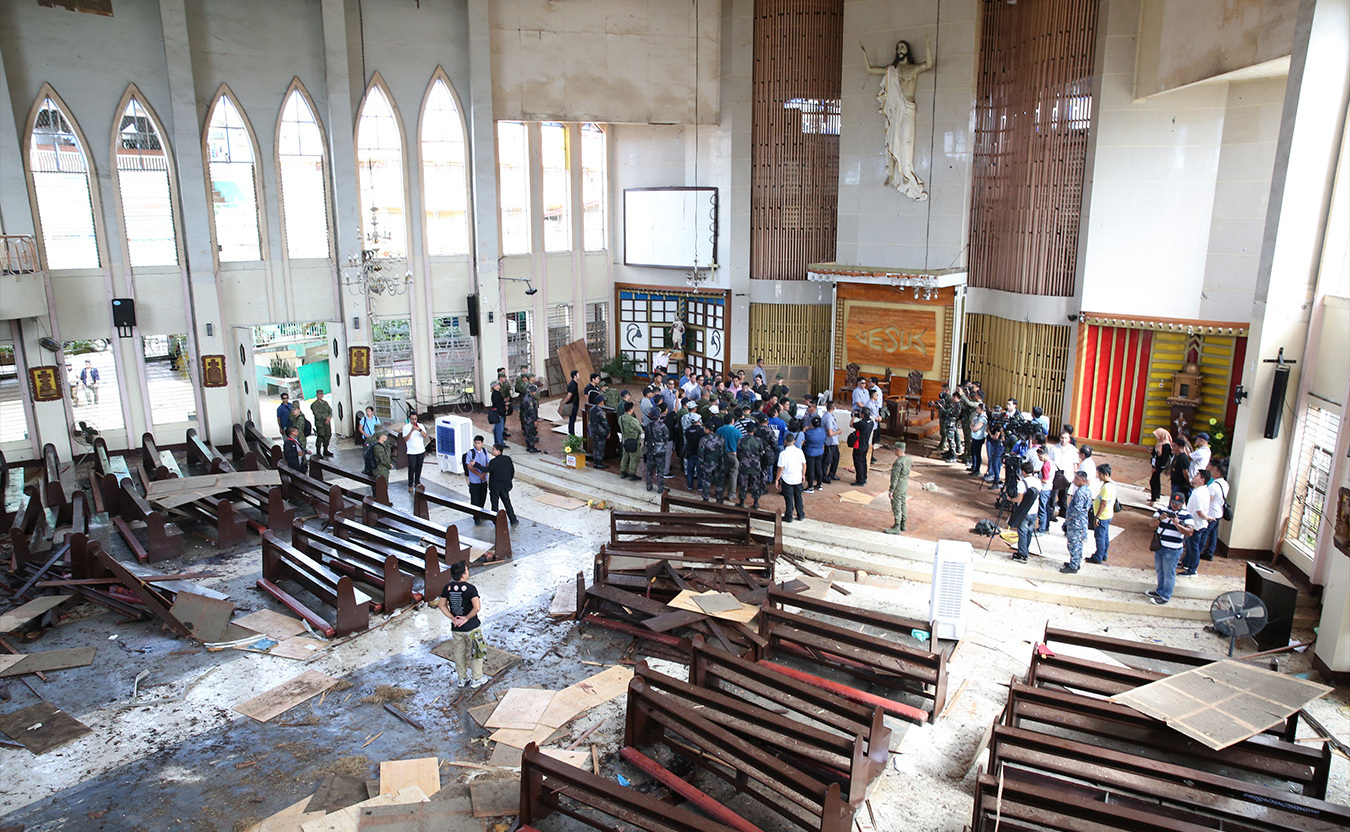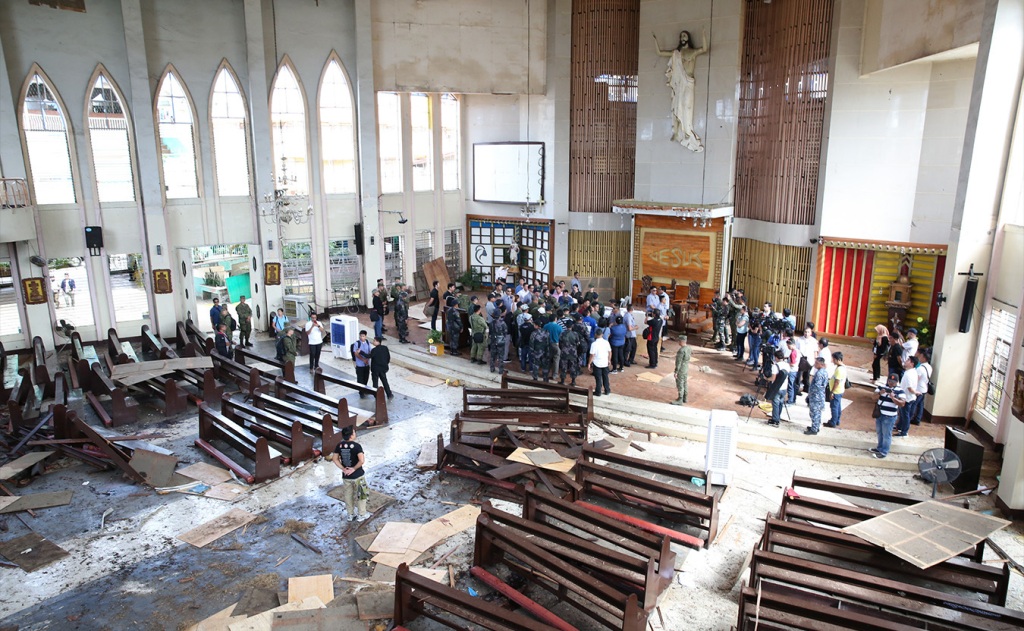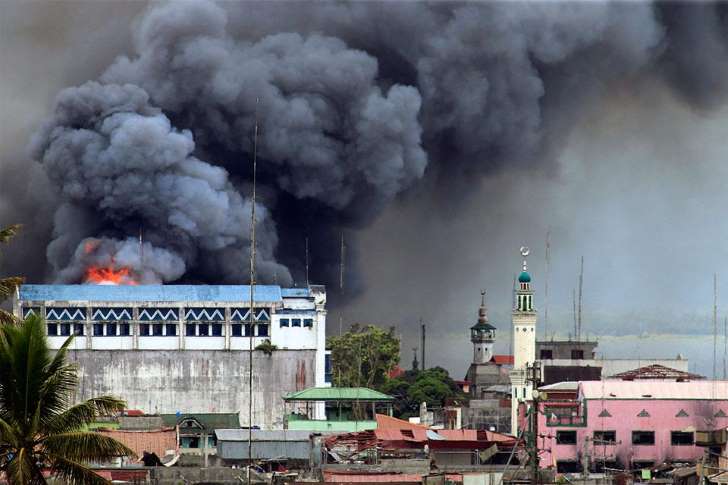
Five years ago, the notorious Philippine militant group Abu Sayyaf had aligned itself with the Islamic State and was in the midst of its most audacious assault. Led by Isnilon Hapilon, it battled Philippine forces alongside militants from the Maute Group and Bangsamoro Islamic Freedom Fighters for five months in the southern city of Marawi. This brazen attempt to seize territory and create a caliphate followed a decade in which Abu Sayyaf had ruled the Sulu and Celebes Seas off Mindanao’s western coast, where it regularly kidnapped seafarers and collected millions of dollars in ransom payments.
Yet the fortunes of Southeast Asia’s most feared jihadi group have altered dramatically. Abu Sayyaf is now in steep decline. Hapilon was killed during the final days of fighting in Marawi and each of his successors have since met the same bloody end. Its funding from the Islamic State has dried up—as have foreign recruits. Philippine forces now have the militants on the retreat and with support from Malaysian troops in Sabah have cut-off maritime corridors for jihadists hoping to travel from abroad. Local dynamics, too, on the islands where Abu Sayyaf still exists, suggest it is firmly on the back foot.
Basilan influence fading
It is on Basilan, where Hapilon’s faction used to reign supreme, that Abu Sayyaf’s losses have been most visible. His successor, Furuji Indama, was killed in September 2020 amid heavy clashes with the military in Zamboanga Sibugay province, where he was tracked-down after escaping Basilan. Attacks on Basilan near ceased after Indama’s death, and Abu Sayyaf’s latest leader there, Radzmil Jannatul (alias Khubayb), was killed by soldiers in late-March, prompting many of his followers to surrender.
The military is confident that the threat on Basilan has receded and recently declared 29 barangays free from Abu Sayyaf influence. This included areas of Isabela city and in the towns of Al-Barka, Hadji Muhtamad, Maluso, and Ungkaya Pukan, where once-frequent skirmishes are now rare. The military said its observations found no evidence of community support or resource generation for the group, and no sign of extremist teaching or radicalization in Islamic schools on the Muslim-majority island.
Sulu hideout under pressure
The neighbouring island of Sulu saw a higher threat from Abu Sayyaf in recent years. Militants there killed scores in a string of suicide bombings from 2018 to 2020, targeting military installations and a Catholic church. Yet rather than signalling a permanent shift in tactics, the blasts appear an explosive last act by extremists aware they were on the run and keen to cause maximum damage before being caught. A month before the final blast, in July 2020, the military reported that Abu Sayyaf’s leader in Sulu, Hatib Hajan Sawadjaan, had been killed in an encounter near Patikul. His body was never found and the group never confirmed his death—but he has not been sighted since, and is presumed dead.

Hatib’s bomb-making nephew, Mundi Sawadjaan, is now the group’s leading figure in Sulu. Two of his brothers were killed by the military last year: Mujafal Sawadjaan died in Patikul in April, while Al-Al Sawadjaan was shot dead in Jolo last June. But despite rumours of his death, Mundi is likely to still be alive. According to local intelligence reports, he was sighted in January buying food supplies but is likely now in a safe house and reliant on relatives for support. Mundi’s uncle Hatib Majid Saeed (alias Amah Pattit) and veteran Radullan Sahiron remain key leaders in Sulu, though the latter’s faction has lain low for years and has not aligned with Islamic State like the Sawadjaan clan. The military reports that, as of 2021, Abu Sayyaf fighters in Sulu numbered 132, down from 300-400 in the last few years.
Links between the Islamic State and Sawadjaan’s cohort are now only symbolic, with financial ties severed after the group was defeated in Iraq and Syria. Profits from kidnappings have also reduced sharply. The last recorded Abu Sayyaf kidnapping-at-sea was in January 2020, when five Indonesian fishermen were seized from a vessel off Tambisan island, near the Malaysian sea border. They were rescued by the Philippine military last March, after a boat being used to transport them overturned in high seas. With commercial vessels avoiding the area, Abu Sayyaf now holds no known captives.
Philippine military build-up
The group’s demise on its island hideouts is mainly due to military pressure. The Philippine armed forces has gradually built up its troop numbers on Sulu in recent years, and by 2022 had a force of 4,500 soldiers—the entire 11th Infantry Division—deployed to the province. This cohort consists of experienced fighters that have been reassigned from other battalions. The division is based in Jolo and has operational responsibility for combating the threat from Abu Sayyaf across the entire Sulu archipelago—which also encompasses the island provinces of Basilan to the east and Tawi-Tawi to the west. Philippine forces carry-out ground raids and have launched regular aerial bombardments which have killed scores of militants hiding out in Sulu’s mountainous and thickly-forested interior.
Malaysia’s supporting role
Malaysia’s Eastern Sabah Security Command (ESSCOM) has also played its part, imposing a nightly curfew for civilian boats in the waters of the Eastern Sabah Security Zone (ESSZ) to deny Abu Sayyaf targets for kidnapping, while leaving any militant vessels that venture into the area after dusk clearly identifiable. The heavily-policed ESSZ stretches along 1,457km of coast, and covers 58,420km2 of sea area and 32,158km2 of land area. Malaysian authorities have sought to prevent the jungles of Sabah becoming a hiding place or a base for Abu Sayyaf militants to launch kidnappings-at-sea—with seven such plots thwarted since the start of 2020. Last May, an Abu Sayyaf cell found to have set up camp in Sabah was dismantled—eight militants, all Filipino nationals, were captured by ESSCOM troops in the town of Beaufort, before another five militants wielding firearms and machetes were shot dead in a firefight when Malaysian troops discovered makeshift dwellings in a nearby mangrove swamp.
Malaysia plans to strengthen its defences along the coast to prevent future incursions. Last year it announced plans for two new control posts in Kuala Meruap and Siguntur, and a maritime forward operations base on Tambisan island, which has seen several past kidnappings off its coast. ESSCOM commander Ahmad Faud Othman has also requested another six surveillance aircraft and 35 radar-equipped patrol boats from the Malaysian government. Joint trilateral naval and air patrols carried-out in the Sulu Sea by Malaysian, Philippine and Indonesian ships and planes will also be intensified after an agreement between the respective defence ministers at a recent meeting in Kuala Lumpur.
Peace in the Bangsamoro?
Military might aside, the local political context in Mindanao also helps explain Abu Sayyaf’s decline. The self-governed Bangsamoro Autonomous Region in Muslim Mindanao (BARMM) was inaugurated in 2019 and precipitated a sharp reduction in violence. The two oldest Moro separatist groups in the region—the Moro Islamic Liberation Front (MILF) and Moro National Liberation Front (MNLF)—have both laid down arms and committed to politics, setting up political parties to contest local elections. The democratic governance structures of the BARMM, led by MILF chair Al Haj Murad Ebrahim, have brought stability, and retain the support of Muslims who voted en masse for the region’s formation.

As a result, Islamist militant groups allied with Abu Sayyaf on mainland Mindanao are also suffering. In Lanao, Faharudin Hadji Satar (alias Abu Zacaria), the supposed “emir” of Islamic State in Southeast Asia, leads just 60-70 remaining fighters of the Maute Group, while the extreme Bangsamoro Islamic Freedom Fighters are hiding-out in ever-smaller numbers in the marshlands of central Maguindanao. Having rapidly lost public support since the BARMM was inaugurated, these groups have been under constant aerial bombardment by the military and now operate only in small, geographically-isolated pockets of territory, unable to carry-out bombings and sieges of major cities like they did previously.
Despite their near capitulation, these remaining Islamist fighters should not be written off just yet. Abu Sayyaf poses a particular threat. While foreign fighters are unable to join and overseas funding has been extinguished, the local element remains a problem due to the unique history of the islands the militants call home. A lower proportion of residents in Sulu—which was once the revered centre of a pre-colonial Islamic sultanate existing from 1415 until the 1900s—voted for the BARMM than in any of its other four component provinces. The archipelago is also struggling to reap the rewards of the BARMM, with Sulu and Basilan remaining the poorest provinces in the Philippines—the poverty rate in Sulu is 71.9% compared to the BARMM average of 39.4%, giving separatism a lingering pull.
Yet Abu Sayyaf is at its lowest ebb since its formation as a radical splinter of the MNLF in the early-1990s. After thirty years of militancy, the Philippine military has its best opportunity yet to end the violence in the Sulu archipelago, and with the help of the BARMM, push Abu Sayyaf to the margins.
A version of this article was first published on Asia Sentinel.













